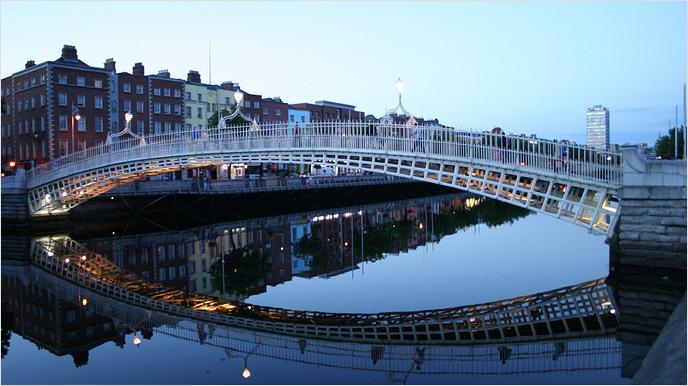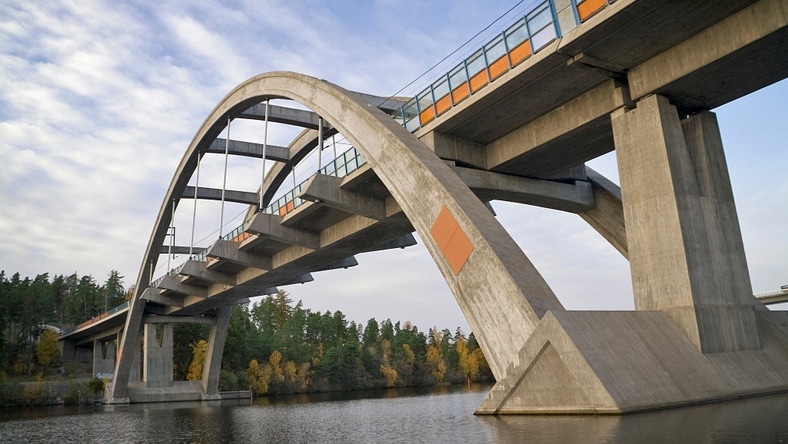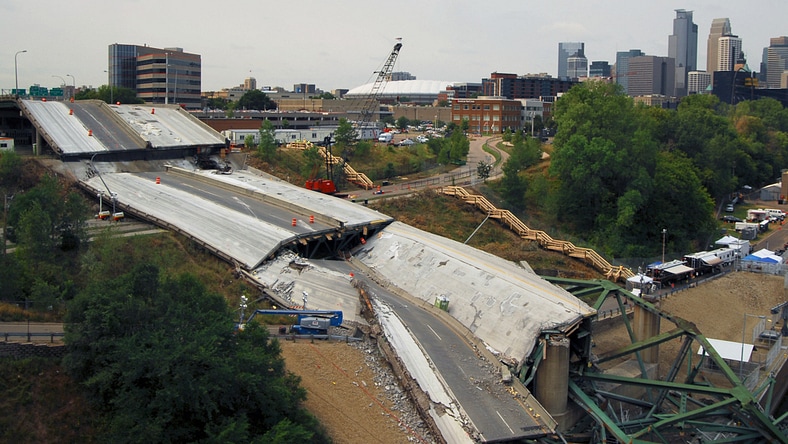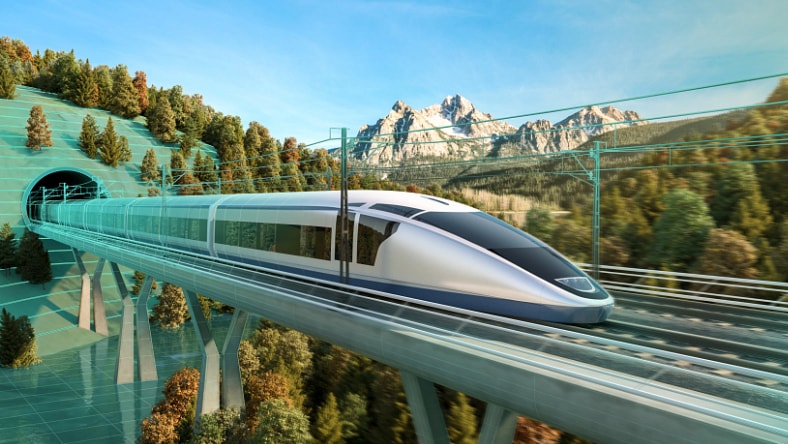& Construction

Integrated BIM tools, including Revit, AutoCAD, and Civil 3D
& Manufacturing

Professional CAD/CAM tools built on Inventor and AutoCAD
Bridges and tunnels improve transportation efficiency, connect communities, and reduce travel time by facilitating road, rail, and even foot traffic across physical obstacles such as rivers, mountains, and more. These highly complex structures represent a significant challenge to design teams. Autodesk’s bridge and tunnel solutions provide advanced analysis and design tools, help connect multi-disciplinary teams, and increase design efficiency with innovative workflows based on Building Information Modeling (BIM).
BIM is key to digitally transforming your bridges and tunnels projects. Across the project lifecycle, BIM allows you to make more informed design decisions. With BIM, you can enhance workflows, boost operational efficiency, and decrease project risk—all while meeting the latest industry demands.
Connect people, data, and processes across the project lifecycle in a cloud-based, common data environment. Expand beyond the office; work together anytime, anywhere. With transparent workflows, you can reduce distractions and errors, and increase capacity. And with a centralized source of truth, you can eliminate siloes, improve access to data, generate insights, and enjoy complete oversight.
Use conceptual modeling to create and present design alternatives within the context of existing environments.
Facilitate effective engagement with stakeholders and communities with compelling design visualizations and simulations.
With connected, BIM-based workflows for all design phases, you prevent loss of data and minimize disruptions.
Powerful BIM and CAD tools for designers, engineers, and contractors, including Revit, AutoCAD, Civil 3D, Forma Site Design, and more
Plan, design, construct, and manage buildings with powerful tools for Building Information Modeling.
Powerful product design and engineering tools for 3D mechanical design, simulation, visualization, and documentation.
In this webinar, explore the latest enhancements in Autodesk connected bridge design workflows, and how they can improve your design and project outcomes.
ARTICLE
Due to advanced technologies like BIM, future bridges will expand beyond their traditional purpose and serve as amphitheaters, picnic gardens, art installations, and more.
ARTICLE
Learn how United Kingdom-based Mabey Bridge uses modular bridges to quickly build sturdy spans and offer on-demand infrastructure for disaster relief.
AUTODESK UNIVERSITY CLASS
Discover how to start building custom bridge components for the InfraWorks-centric workflow using Inventor and Revit, with examples and benefits of each method.
AUTODESK UNIVERSITY CLASS
Explore this class to learn how to deliver bridge projects using an intelligent model-based approach and the Autodesk design suite.
BLOG
See how the right software tools and processes can help you improve efficiency, reduce risk, and enhance project delivery in the bridge design process.
Support each stage of your road or highway project.
With reduced complexity and increased quality, deliver best-in-class rail infrastructure.
See how Autodesk solutions can enhance your airport and port design.
Empower your transportation workforce to achieve greater resilience and stability.
When designing a bridge, there are several key factors to consider, first and foremost its purpose and function. The type of bridge designed depends on whether it will be carrying vehicular traffic, pedestrians, heavy loads, or all of those. Next, you would consider site conditions, such as topography, geology, and soil type, to ensure a stable foundation and safe construction, and environmental factors, such as wind, seismic activity, and water flow, to ensure the bridge can withstand natural forces.
In addition, bridges must be designed to handle the expected traffic volume and load requirements, including factors such as the weight and distribution of vehicles, pedestrians, and other loads. The choice of materials used in the bridge's construction, such as steel, concrete, or wood, will depend on factors such as the expected lifespan of the bridge, cost, and aesthetic considerations. And finally the bridge design must prioritize safety for all users, like pedestrians, bicyclists, and drivers. Accessibility for people with disabilities should also be considered.
This kind of software is typically used by civil engineers, structural engineers, and other professionals involved in the design, construction, and maintenance of bridges and tunnels. This may include contractors, architects, project managers, and government agencies responsible for overseeing transportation infrastructure. The software can be used for various tasks, such as modeling, analysis, and design of bridges and tunnels, as well as for simulation and visualization of construction processes and maintenance operations. Additionally, some academic institutions may use these software programs for teaching and research purposes.
Autodesk has several software programs that are specifically designed for civil engineers building bridges or tunnels. Some of the popular software programs include:
Key considerations for engineers when designing and constructing safe, functional, and efficient bridges include:
Different types of tunnels vary in construction techniques depending on the purpose of the tunnel, the geological conditions of the site, the length of the tunnel, and other factors. Some common tunnel types include:
The construction techniques for each type of tunnel can vary depending on factors such as the geology of the site, the depth of the tunnel, and the length of the tunnel. However, some common techniques include excavation, tunnel support systems, lining installation, and ventilation and lighting systems.
Depending on the location and geology, the ground conditions can vary greatly, ranging from hard rock to soft soil. This can affect the stability of the tunnel and increase the risk of collapse. To overcome this, engineers may use ground reinforcement techniques such as grouting, rock bolting, and shotcreting. Water can seep into the tunnel during construction, causing flooding and potentially damaging equipment. To prevent this, engineers may use water management techniques such as drainage systems and waterproofing materials.
Tunnels also require proper ventilation to maintain air quality and prevent the buildup of harmful gases. This can be challenging in long tunnels and may require the use of ventilation shafts and fans. Additionally, it can be difficult to provide safe and efficient access and egress points for workers and equipment can be difficult, particularly in urban areas with limited space. To overcome this, engineers may use temporary access tunnels or shafts. And finally, tunnel construction involves many different stakeholders, including engineers, contractors, and government agencies. Effective coordination is essential to ensure that the project is completed on time and within budget.
These challenges can be overcome through careful planning, the use of advanced technology, and collaboration between all stakeholders involved in the project.
Ensuring the safety and durability of tunnels over time requires a combination of design, materials selection, quality control, maintenance, and emergency preparedness.








